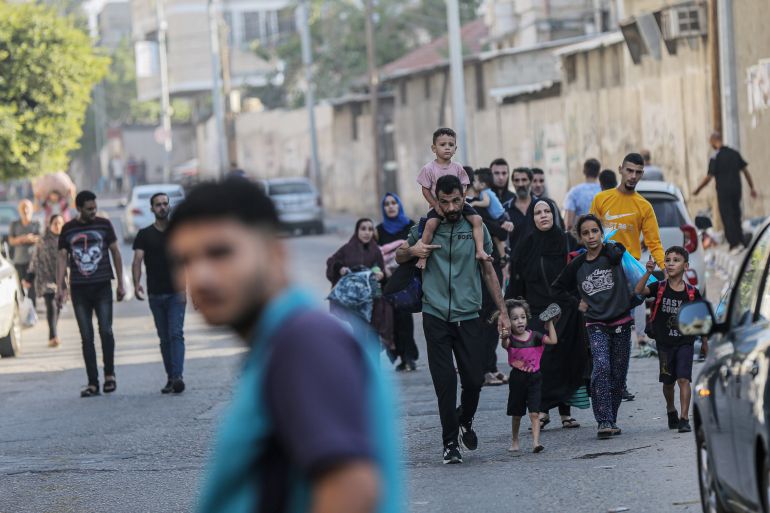“I’m recording this message from Gaza. I don’t have the words to describe the dire situation here right now. There is no food, there is no water, and there are no supplies. Outside the few shops that remain open, long lines of people wait for scarce loaves of bread. No cars drive in the streets; people are too scared of being targeted by the Israeli war planes flying above us. The hospitals cannot receive more patients. Relentless bombing has razed entire neighborhoods to the ground. You would no longer recognize them. The situation in Gaza is lacking all conditions of life,” Palestinian journalist and activist Ahmed Abu Artema wrote last week, asking the world to prevent a rep
eat of history.
Ahead of a feared ground offensive, Israel’s army has issued an order to over a million people in Gaza City to move south in just 24 hours. The Israel Defense Forces have said that this is for the safety of Palestinian civilians, but this directive has been condemned by the United Nations as “impossible” without “devastating humanitarian consequences”.

A UN human rights expert has warned that Palestinians are in grave danger of mass ethnic cleansing and called on the international community to urgently mediate a ceasefire.
Also read: Who is Motaz Azaiza?
Despite some differences, the current state of affairs in Israel and Palestine bears disturbing similarities to the period leading up to 1948, when over 75% of the Palestinian population was driven out during the Nakba (Arabic for “catastrophe”). With senior figures in the Israeli cabinet now openly calling for further Palestinian expulsions, this looks more and more like the second Nakba.

Much has been written about the extremism of the current Israeli administration and the political instability it has caused since it came to power at the end of 2022. Settler violence in particular is on the rise, emboldened by the inclusion of far-right extremists in the Israeli government. According to the UN, incidents of settler violence are up by 39 percent in 2023 compared to last year.
Israeli state Huwara pogrom received open support from some cabinet ministers. Finance Minister Belazel Smotrich, who also holds authority over civilian affairs in the West Bank, tweeted that Huwara should be “wiped out.” The Israeli army, which controls the West Bank, consistently fails to intervene to protect Palestinian civilians—as international law requires—and soldiers have even been documented joining in with settler violence. This is especially concerning given that such violence is now intensifying in both nature and frequency.
There are startling similarities between the 1940s and the current wave of heinous violence committed against Palestinians by both the Israeli state and settlers. Notably, extremist parts of the Zionist movement also became more militant in the years preceding the Nakba. Hardliners disregarded Palestinian lives as well as international opinion, just as they do now. After launching their insurgency campaign in 1944, the Irgun Zvai Leumi (IZL) and Lehi militias attacked both Palestinian communities and the British Mandate authorities in Palestine—most famously in the King David Hotel bombing that killed 91 people in 1946. Two years later, the IZL and Lehi jointly carried out the infamous Deir Yassin massacre, murdering more than 100 unarmed civilians in the village outside Jerusalem. Many Palestinian refugees later cited Deir Yassin as a critical factor in their decision to flee their homeland.

There’s another obvious parallel with the period leading up to the Nakba. The Palestinian leadership was geographically fragmented and split between competing power bases both then and still. The 1936–1939 Revolt resulted in the deaths, injuries, imprisonment, or exile of approximately one in ten adult Palestinian men, as a result of the brutal British repression that destroyed the nationalist movement. Among them was Hajj Amin al-Husseini, the 1937 exiled nationalist leader and grand mufti of Jerusalem. One of the main reasons the Palestinians were defenseless and disorganized in 1948 was the leadership’s weakness.
The Palestinian people have since experienced several severe crises and ongoing displacement. However, during that time, they have never seen the confluence of a far-right Israeli government with a disintegrated Palestinian leadership, resulting in unprecedented levels of Israeli state-settler violence since 1948. All of this means that the risk of a second Nakba is at its highest in 75 years.



































